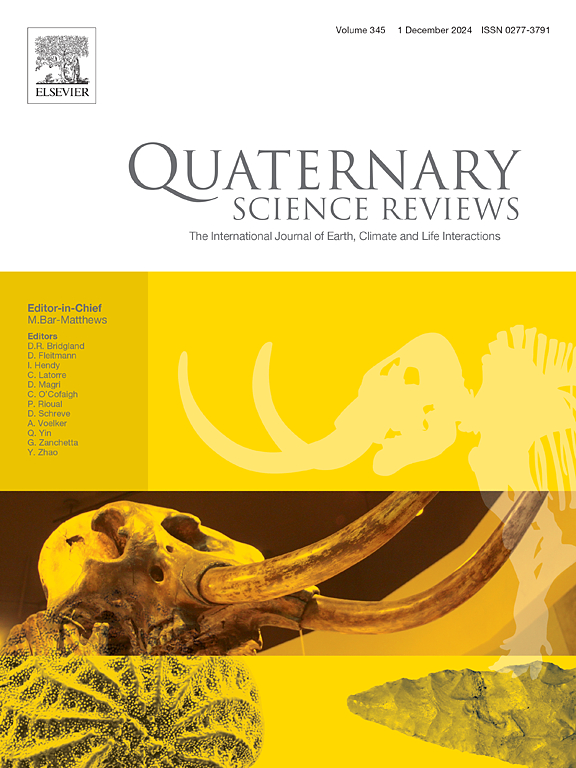Neolithic human adaptations to the environmental changes in the Jianghan Plain, middle Yangtze Valley
IF 3.2
1区 地球科学
Q1 GEOGRAPHY, PHYSICAL
引用次数: 0
Abstract
In order to explore the interactions among human activities, hydroclimate, and sea-river-lake level fluctuations in the mid-lower Yangtze Valley since the Neolithic, this study, based on AMS 14C and OSL dating of the Core JH002 along with geophysics, geochemistry, and microfossils, reconstructs the hydroclimate changes, sedimentary evolution, and human adaptations in the Jianghan Plain since 13,000 cal a BP. The results show that solar radiation controlled the intensity of the East Asian monsoon. Meanwhile, 5 wet-dry climate alternation phases and 30 flood-prone periods were identified. Hydroclimates and sea level changes affected the regional environment evolution and human activities. During 13,000–11,700 cal a BP (transition of Paleolithic and Neolithic), high-energy riverbed environments and extreme floods constrained human activities, with the riverbed linked to the deeply incised valleys from the Last Glacial Maximum and low sea levels during the Younger Dryas period. During 11,700–7800 cal a BP (early Neolithic), the elevated river and lake water levels caused by warm-wet conditions and rising sea levels created wetlands, facilitating human activities. The earliest evidence of human activities in the interior of Jianghan Plain dates back to about 11,300 cal a BP. From 7800 to 4000 cal a BP (mid-late Neolithic), frequent typical floods and a turbulent delta environment collectively hindered human activities. During 4000–3000 cal a BP (Xia-Shang Dynasties), high water level and expansion of Paleo-Yunmeng Lake Group limited human activities such as rice cultivation. Since 3000 cal a BP, improved water management allowed Chu people to coexist with floods, leading to the prosperity of Chu Culture. This study offers critical insights into the interactions between regional environment changes, ancient culture evolution, and human adaptations in the Yangtze region.
求助全文
约1分钟内获得全文
求助全文
来源期刊

Quaternary Science Reviews
地学-地球科学综合
CiteScore
7.50
自引率
15.00%
发文量
388
审稿时长
3 months
期刊介绍:
Quaternary Science Reviews caters for all aspects of Quaternary science, and includes, for example, geology, geomorphology, geography, archaeology, soil science, palaeobotany, palaeontology, palaeoclimatology and the full range of applicable dating methods. The dividing line between what constitutes the review paper and one which contains new original data is not easy to establish, so QSR also publishes papers with new data especially if these perform a review function. All the Quaternary sciences are changing rapidly and subject to re-evaluation as the pace of discovery quickens; thus the diverse but comprehensive role of Quaternary Science Reviews keeps readers abreast of the wider issues relating to new developments in the field.
 求助内容:
求助内容: 应助结果提醒方式:
应助结果提醒方式:


